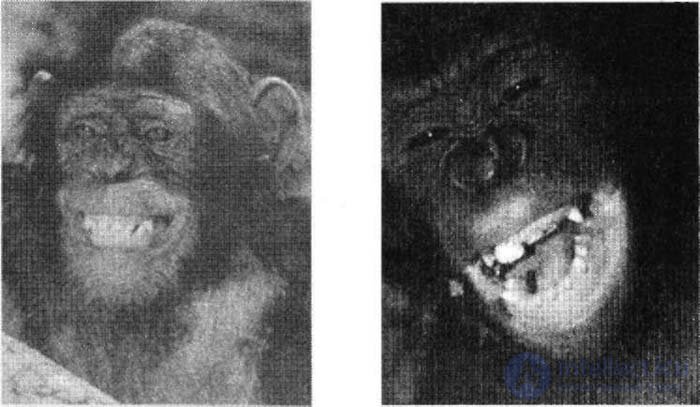Smile and laughter are signals that indicate that a person is happy. At birth we cry, at the age of five weeks we start to smile, and between the fourth and fifth months of life we learn to laugh. Babies quickly learn that crying attracts attention, and a smile can hold an adult at the cradle. Recent studies have shown that in chimpanzees, a smile serves a deeper and more primitive purpose.
When demonstrating aggression, great apes expose the lower canines, showing that they can bite. People in a state of aggression do the same. They lower or protrude the lower lip forward, the main task of which is to cover the lower teeth. In chimpanzees, two types of smiles can be distinguished, and one of them is a signal of peace. One monkey demonstrates its humility to the other. This smile, which is also called the “mask of fear”, looks like this: the lower jaw is lowered, all the teeth are visible, the corners of the mouth are drawn back and lowered. Such a smile strongly resembles a human one.

Mask of fear (left) and the primates' playful smile Another smile can be called "playful." A chimpanzee demonstrates teeth, corners of the mouth and eyes raised. At the same time, the monkey makes sounds that resemble human laughter. In both cases, smiles are used to demonstrate subordination and submission. The first can be interpreted as: “I do not represent a threat. You see that I myself fear you. " The second is different: “I do not represent a threat. You see, I just want to play. ” The same expression can be seen on the face of a monkey, which fears that it can be attacked by congeners. The muscles that control the corners of the mouth stretch the mouth horizontally or slightly lower the corners, and the eyes remain motionless. Approximately the same smiling person who went on a busy highway and almost got hit by a bus. In this state, a person experiences a strong fear. He smiles nervously and says to himself: “Wow! But I almost died! ”
The human smile serves the same purpose as the primate smile. She says to the interlocutor that you are not a threat and ask to perceive you on a personal level. The lack of a smile explains why many dominant personalities, such as Vladimir Putin, James Cagney, Clint Eastwood, Margaret Thatcher and Charles Bronson, always look gloomy and aggressive. They seldom smile so as not to seem at least somewhat submissive and subordinate.
Studies conducted in the courtroom, showed that the apology expressed with a smile, leads to the fact that the punishment is much weaker than after an apology made without a smile. So grandma was absolutely right.

Comments
To leave a comment
Body language
Terms: Body language